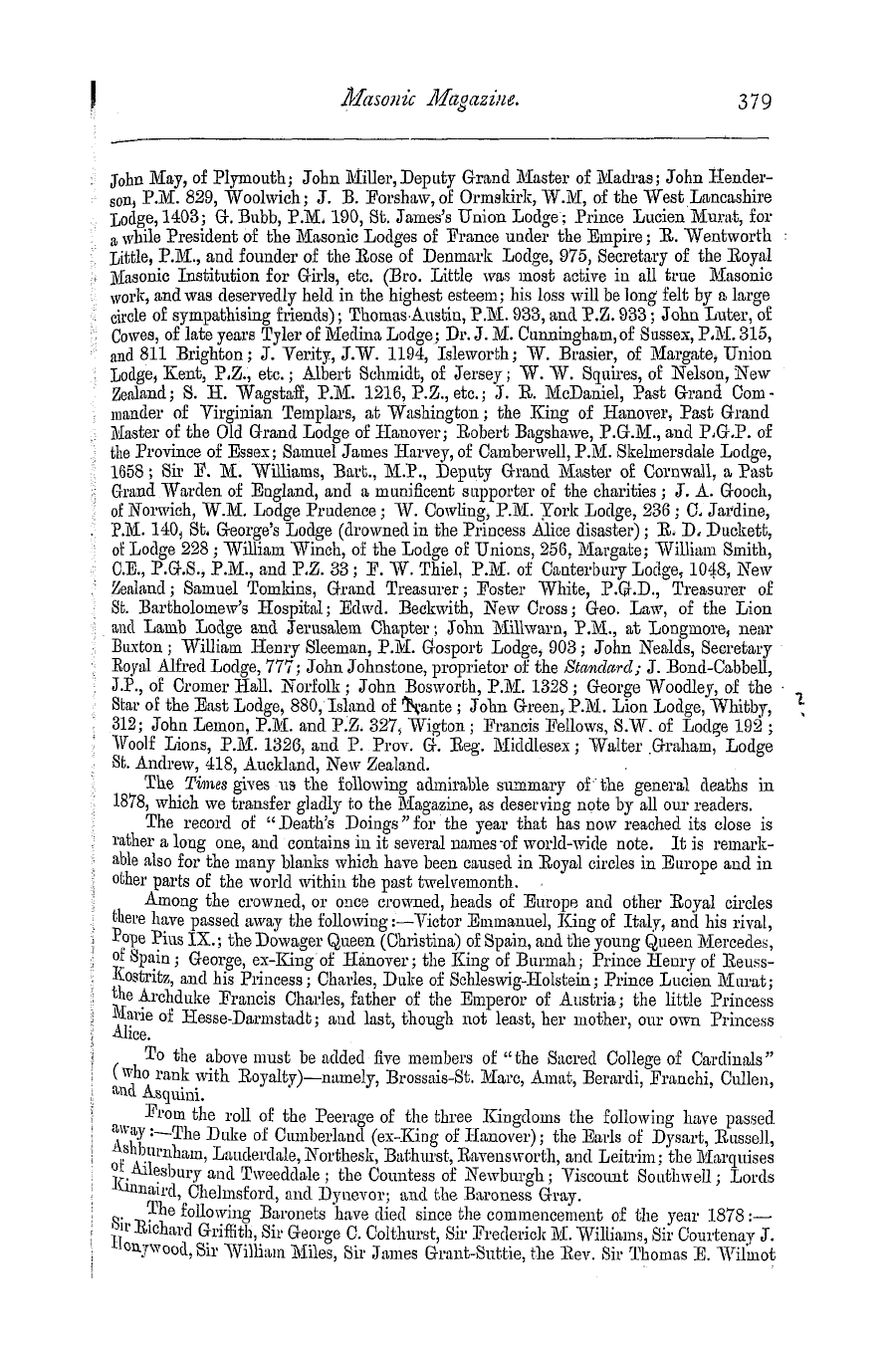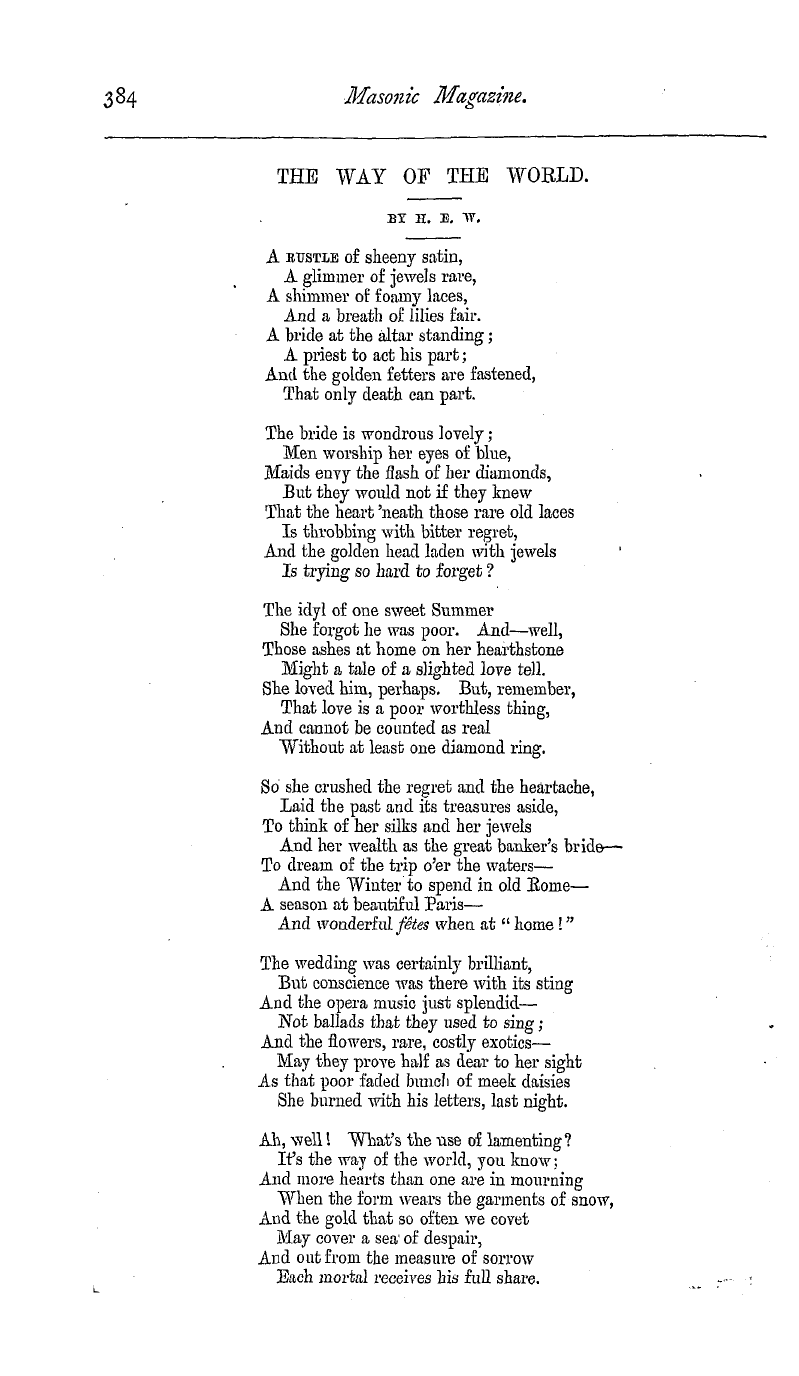-
Articles/Ads
Article GOTHIC ARCHITECTURE.* ← Page 3 of 4 →
Note: This text has been automatically extracted via Optical Character Recognition (OCR) software.
Gothic Architecture.*
the architects to erect in the middle of the building four transepts of equal dimensions in the shape of a Greek cross , which style of building appears to haA'e been in great favour , particularly in the Greek empire . The church of St . Sophia at Constantinople , those of St . Vitale at Ravenna , and of St . Constance and St . Agnes at Rome , as well as the cathedral of St . Mark at Venice , although it was built at a later period , but entirely in the Grecian style , and the cathedral of Pisa , are evidences of this combination of
domes and circular churches Avith colonnades and the shape of basilica ? . The practice of filling the A'oids of large and small arched openings Avith . columns , Avhich , though they do not contribute to the solidity of the building , yet seem essential supporters , and frequently give the Avhole a light and at the same time rich appearance , was introduced hy the Byzantines . The first example of it is , hoAvever , found in the Pantheon at Rome . This practice is particularly characteristic , and appears of great
importance in the architecture of the follo \ A'ing centimes . All the buildings Avhich , from Constantine down to the ninth century , were erected within the limits of the' former Roman empire , bear witness to the corrupted Roman architecture of Diocletian ' s age , Avith the additional alterations AA'hich the use of churches , the custom of building AAnth old materials , and the continually sinking state of the empire and of the nation , necessarily introduced . The irruption of the Goths and other barbarians Avho inundated the provinces of the Roman empire did not
probably introduce any material alteration in the state of the art , except that , of hastening its fall . I cannot possibly accede to the opinion of those connoisseurs AA'I IO ascribe an individual and peculiar style of architecture to the Goths and . Lombards in Italy and Spain , to the Franks in Gaid , and to the Saxons in England . On examining their AA'orks , it AAIII be found that the Roman architecture of the fifth and sixth centuries , Avith some few modifications , prevailed in these countries ; and the circumstance is easily
explained . The conquerors did not exterminate the old inhabitants , but left to them exclusively , at least in the first periods of their invasion , the practice of those arts of peace upon Avhich the rude warrior looked AA'ith contempt . Aid , even at a later time , the intimate connexion Avith Rome , Avhich the clergy , then the only civilized part of the nation , entertained , and the unceasing and generally continued use of the Latin language in the divine service , gave considerable influence to Roman arts and sciences .
This must have been so much . the more the case , from the constant obligation of all free men to devote themselves to Avar ; whereby the practice of the arts Avas left almost exclusively to the clergy . The taste for fine proportions Avas ahnost entirely lost in these barbarous ages , and architecture became little less than a mere slavish imitation of earlier forms . Tet it appears that the art of preparing mortar , and the selection of building materials , as well as the ImoAA-ledge of solid construction in their structures , for AA'hich the ancient Romans were so eminent , Avere fortunately preserved .
It Avill be proper to mention here a passage in the epistles of Cassiodorus , the senator and chancellor of Theodoric , the Gothic king , Avho reigned in Italy from the year 493 to 525 , in AA'hich he describes the state of architecture in his time . Triaboschi quotes it in his History of the Sciences in Italy ( third volume , page 68 ) . Speaking of the then existing Avorks of art AA'hich excited his admiration , Cassiodorus giA es a particular descri ption of the very great lightness and elegance of columns in the folloAving terms : — " Quid dicamus columnarum junceam proceritatem I Moles illas sublimissimas
fabricarum quasi cpuibusdam erectis hastilibus contineri et substantice qualitate concavis canalibus excavatas , ut magis ipsas ceslimes f ' uisse transfusas ; alias ceris judices factum , quod metallis durissimis vicleas expolitum . " ' * This passage , if clearly and correctly translated , and confirmed by the architectural monuments of that time , Avould be of immense interest to the history of architecture . I do not know of any building , from the time of Theodoric doAA'n eA'en to the tenth century , to Avhich this description seems to apply . The basement of the palace , Avhich is supposed to haA'e been built by Theodoric at Terraeina , is entirely in the Roman style . The church of St . Apollonaris at Ravenna is a common basilica , like the many that have been erected before and after ,
Note: This text has been automatically extracted via Optical Character Recognition (OCR) software.
Gothic Architecture.*
the architects to erect in the middle of the building four transepts of equal dimensions in the shape of a Greek cross , which style of building appears to haA'e been in great favour , particularly in the Greek empire . The church of St . Sophia at Constantinople , those of St . Vitale at Ravenna , and of St . Constance and St . Agnes at Rome , as well as the cathedral of St . Mark at Venice , although it was built at a later period , but entirely in the Grecian style , and the cathedral of Pisa , are evidences of this combination of
domes and circular churches Avith colonnades and the shape of basilica ? . The practice of filling the A'oids of large and small arched openings Avith . columns , Avhich , though they do not contribute to the solidity of the building , yet seem essential supporters , and frequently give the Avhole a light and at the same time rich appearance , was introduced hy the Byzantines . The first example of it is , hoAvever , found in the Pantheon at Rome . This practice is particularly characteristic , and appears of great
importance in the architecture of the follo \ A'ing centimes . All the buildings Avhich , from Constantine down to the ninth century , were erected within the limits of the' former Roman empire , bear witness to the corrupted Roman architecture of Diocletian ' s age , Avith the additional alterations AA'hich the use of churches , the custom of building AAnth old materials , and the continually sinking state of the empire and of the nation , necessarily introduced . The irruption of the Goths and other barbarians Avho inundated the provinces of the Roman empire did not
probably introduce any material alteration in the state of the art , except that , of hastening its fall . I cannot possibly accede to the opinion of those connoisseurs AA'I IO ascribe an individual and peculiar style of architecture to the Goths and . Lombards in Italy and Spain , to the Franks in Gaid , and to the Saxons in England . On examining their AA'orks , it AAIII be found that the Roman architecture of the fifth and sixth centuries , Avith some few modifications , prevailed in these countries ; and the circumstance is easily
explained . The conquerors did not exterminate the old inhabitants , but left to them exclusively , at least in the first periods of their invasion , the practice of those arts of peace upon Avhich the rude warrior looked AA'ith contempt . Aid , even at a later time , the intimate connexion Avith Rome , Avhich the clergy , then the only civilized part of the nation , entertained , and the unceasing and generally continued use of the Latin language in the divine service , gave considerable influence to Roman arts and sciences .
This must have been so much . the more the case , from the constant obligation of all free men to devote themselves to Avar ; whereby the practice of the arts Avas left almost exclusively to the clergy . The taste for fine proportions Avas ahnost entirely lost in these barbarous ages , and architecture became little less than a mere slavish imitation of earlier forms . Tet it appears that the art of preparing mortar , and the selection of building materials , as well as the ImoAA-ledge of solid construction in their structures , for AA'hich the ancient Romans were so eminent , Avere fortunately preserved .
It Avill be proper to mention here a passage in the epistles of Cassiodorus , the senator and chancellor of Theodoric , the Gothic king , Avho reigned in Italy from the year 493 to 525 , in AA'hich he describes the state of architecture in his time . Triaboschi quotes it in his History of the Sciences in Italy ( third volume , page 68 ) . Speaking of the then existing Avorks of art AA'hich excited his admiration , Cassiodorus giA es a particular descri ption of the very great lightness and elegance of columns in the folloAving terms : — " Quid dicamus columnarum junceam proceritatem I Moles illas sublimissimas
fabricarum quasi cpuibusdam erectis hastilibus contineri et substantice qualitate concavis canalibus excavatas , ut magis ipsas ceslimes f ' uisse transfusas ; alias ceris judices factum , quod metallis durissimis vicleas expolitum . " ' * This passage , if clearly and correctly translated , and confirmed by the architectural monuments of that time , Avould be of immense interest to the history of architecture . I do not know of any building , from the time of Theodoric doAA'n eA'en to the tenth century , to Avhich this description seems to apply . The basement of the palace , Avhich is supposed to haA'e been built by Theodoric at Terraeina , is entirely in the Roman style . The church of St . Apollonaris at Ravenna is a common basilica , like the many that have been erected before and after ,















































